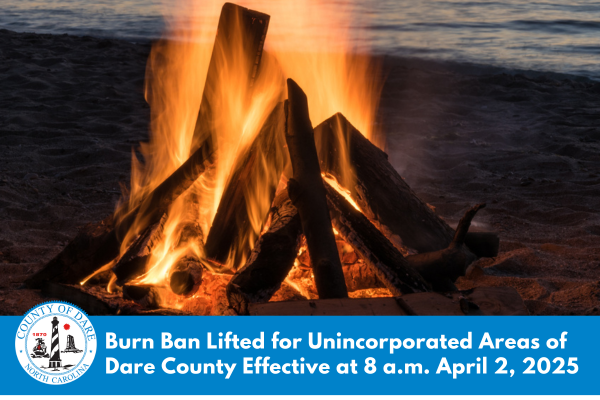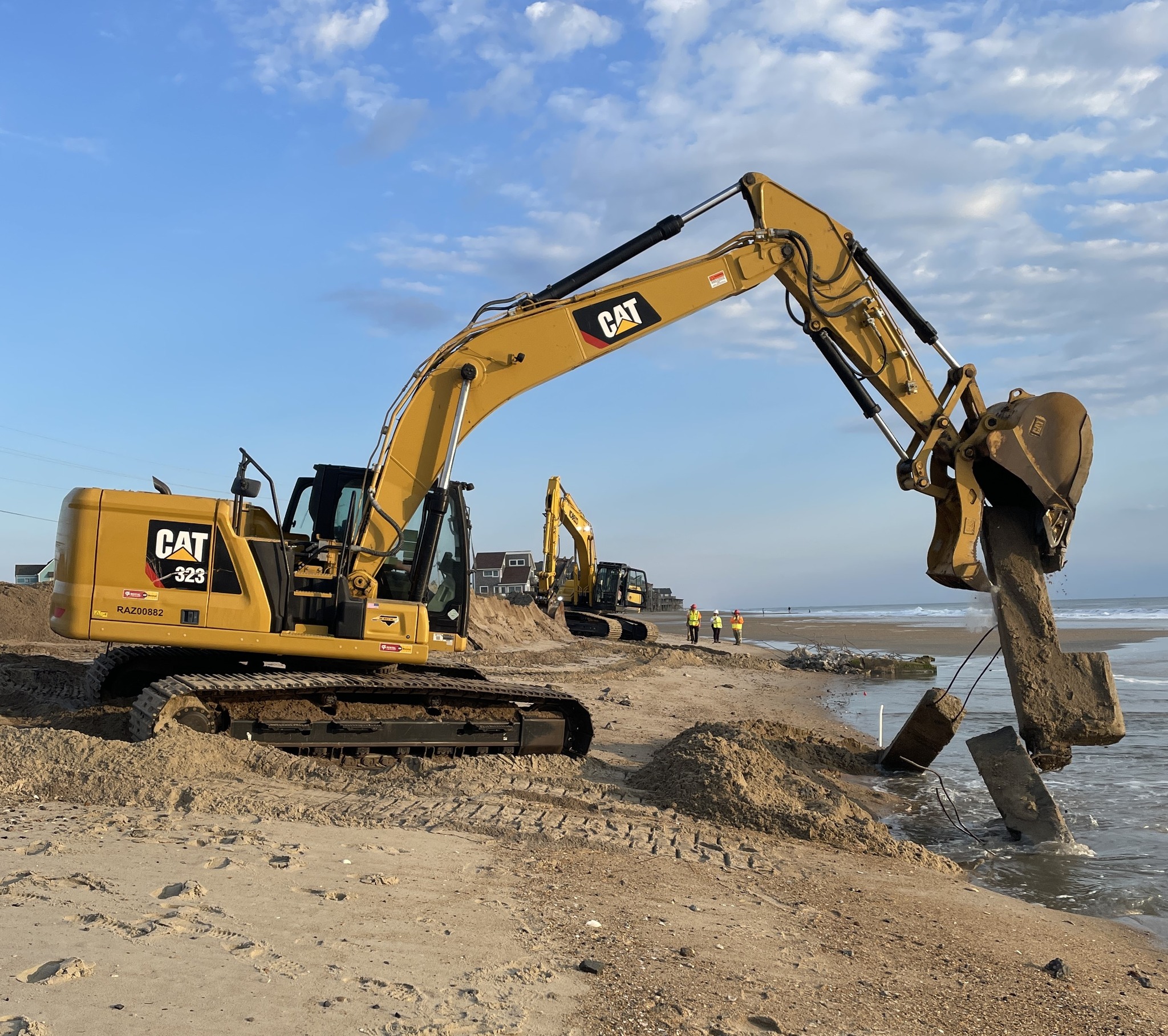Coast Guard warns mariners away from Hatteras Inlet as officials seek solutions
Just hours after the Coast Guard urged mariners not to use the South Ferry Channel at Hatteras Inlet, a county waterways panel convened again in Hatteras village to seek solutions to stubborn shoaling in the channel that is being called “catastrophic.”
“Recent hydrographic surveys indicate shoaling in South Ferry Channel has resulted in an average channel depth of less than 2 feet,” Coast Guard officials said in a late afternoon news release. “The current navigational aids in and around South Ferry Channel do not reflect accurate channel depth.”
Coast Guard officials said that they were “analyzing options for removing navigational aids” near the channel.
Later in the evening, at a meeting of the Dare County Oregon Inlet and Waterways Commission at the Hatteras Civic Center, Chief Jason Burke, who heads to the Coast Guard Aids to Navigation group out of Wanchese, declined to call the inlet “closed.”
“This is no longer a feasible route,” he told the 50 or so commercial and recreational watermen, citizens, and local, state, and federal officials gathered for the meeting.
He also told the watermen, in response to questions, that the current channel markers and buoys would be removed. The boat captains objected, telling Burke that they use the buoys as “reference points” to pick their way through the shoals and find enough deeper water to get in and out of the inlet.
Boat captains are feeling the squeeze from the rapidly shoaling piece of the channel out of Hatteras Inlet in a way they haven’t before.
In the last few weeks, conditions have rapidly deteriorated in an area between the South Ferry Docks on Ocracoke I sland and the Hatteras Inlet gorge — a waterway that is desperately needed for boaters to get in and out of the inlet.
Fixing the problem is exacerbated by its location, which seems to be out of bounds of both state and federal responsibility to dredge and perhaps ability to get it done. Since the state ferry now uses a natural, although longer, channel, and the U.S. Army Corps of Engineers is authorized to maintain only the Rollinson Channel – which includes much of the now unused shorter channel – the area falls into a regulatory no man’s land.
“We are in a situation historically where we’ve never been before,” said charter boat captain Ernie Foster, who is a member of the commission. “We are in uncharted territory. It’s moving so dynamically that we’re behind the curve.”
Foster said the current situation is “catastrophic” to the economy of Hatteras Island. And, he and others note, it is also a threat to public safety.
Hatteras is a “harbor of safe refuge” for mariners and the inlet is currently used by the Coast Guard to mount rescue missions from its Hatteras village station. Last week, a Coast Guardsman stationed there said that the time it took to get in and out of the inlet was a concern for rescue boats.
After a special meeting of the Waterways Commission last week, members decided to continue the discussion of fixing the problems at a regularly scheduled meeting last night, which was moved from Manteo to Hatteras.
Six Dare County commissioners attended the meeting. Allen Burrus of Hatteras is a member of the commission, and chairman Bob Woodard, vice-chairman Wally Overman, Beverly Boswell, Warren Judge, and Margarette Umphlett also were there.
At last night’s meeting, Steve Shriver, the Army Corps’ team leader of the Outer Banks survey section, reviewed the most recent survey of the shoaled area in the South Ferry Channel. The survey, he said, found that areas that were in the 7- to 8-foot deep range in May are now down to less than 6 feet in areas.
Roger Bullock, chief of navigation for the Army Corps’ Wilmington District, said mapping work was ongoing in the area and should be completed by the end of the week.
The Corps’ authorization to dredge in the area is “to follow the deep water through the inlet into the gorge.”
“We don’t have a short route where we have historically dredged,” he said.
Jed Dixon, deputy director of the state’s Ferry Division, reported back on questions about state permits to dredge in the “no man’s land.”
Dixon said that he has been told that the Army Corps can work on the permit that the state has to dredge in the shoaled area, but that a CAMA permit would need to be modified to allow a sidecaster dredge to do the work.
If the funds were in place, Dixon said he thinks the work could get underway in a week or so.
However, funding brings up other regulatory roadblocks.
County manager Bobby Outten said that if the Corps is to do the dredging, the project would have to be paid for with federal funds, which have mostly been expended for the current year.
State money could be available out of the shallow-draft inlet fund, if legislation authorizing it passes the General Assembly. However, Outten said, the state and the Army Corps would have to craft a Memo of Understanding — or MOA — to cover the project. Even a project-specific MOA would take about 90 days, Outten said.
Charter boat captain Buddy Hooper said charter boat captains think there is a better way than to dredge in the currently used channel, which everyone agrees, is constantly moving and might not even stay clear for long.
Just inshore from the South Ferry Channel — to the north of it on the maps — is a stretch of naturally deeper water that could be used if a very short shoaled area is dredged. Hooper said that the area clogged by sand isn’t much more than 50 yards wide.
“Looking at the whole picture, that’s the way to go,” Hooper said.
The discussion then skipped to whether the state could dredge the area that Hooper was describing.
The state dredge, Dixon said, was currently working at Stumpy Point. Using it was theoretically possible, he ventured, though it raises issues of whether the dredge is up to the job, how long it would take to set it up, and where the spoils would go.
As various scenarios were discussed, the growing frustration of the captains and other inlet users was becoming obvious.
“It seems that at these meetings, it’s always about the paperwork,” said charter boat captain Rom Whitaker.
Towards the meeting’s end, Judge proposed that the Waterways Commission consider making a motion that the Board of Commissioners begin the process for implementing long-term and single-project MOAs with the Corps, further explore the bounds of state permits for dredging and whether the state dredge can do the work, and ask Chairman Woodard to discuss with Gov. Pat McCrory getting the state dredge to do the job.
All agreed that dredging the short clogged area should cost less than $100,000 and could probably be done in just a few days if the governor would send the state dredge to “punch it out.”
Burrus made a motion, which the commission passed unanimously, to ask Woodard to talk to the governor and seek his cooperation in “getting that started.”
On that note, the meeting ended — leaving the immediate future for those who depend on clear passage through Hatteras Inlet unclear.













